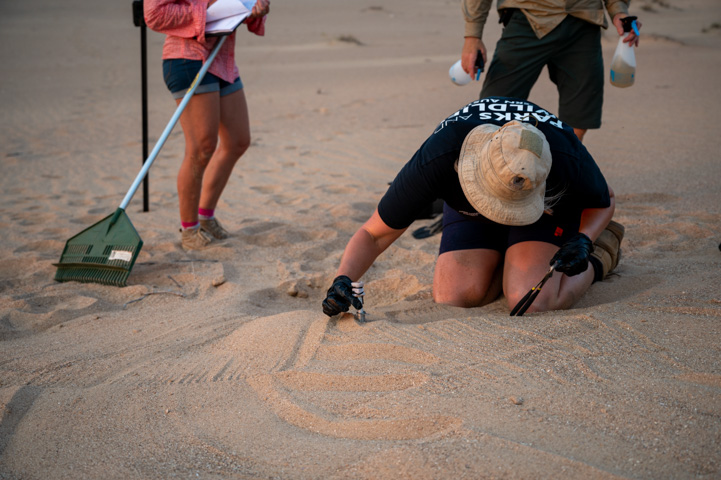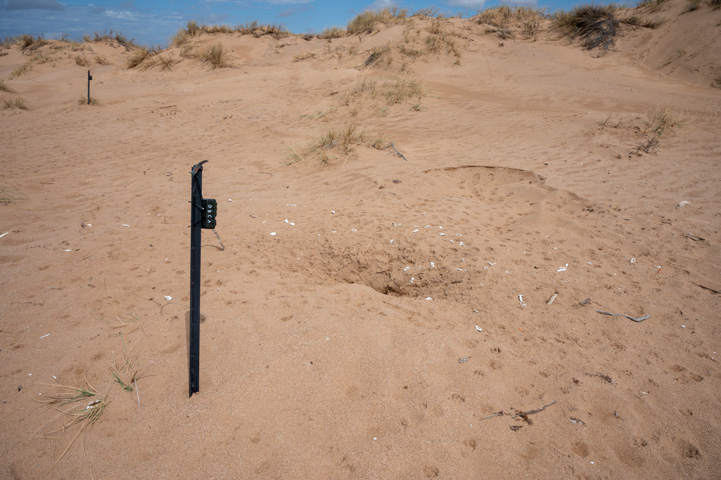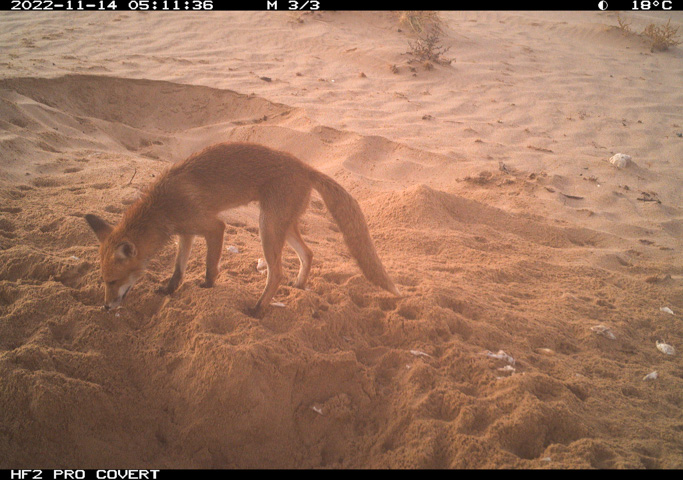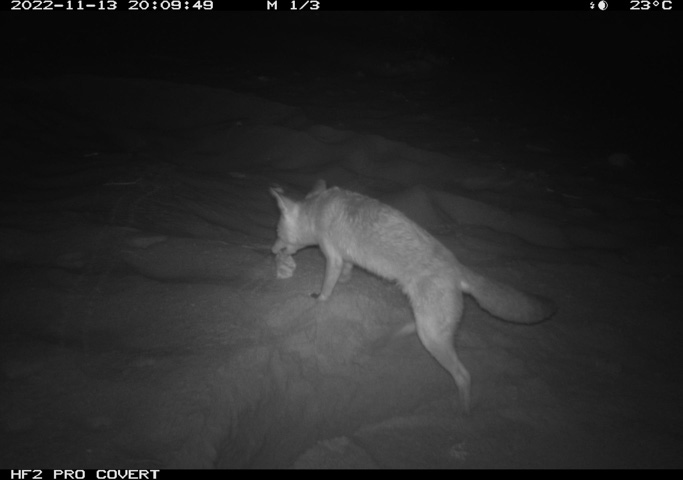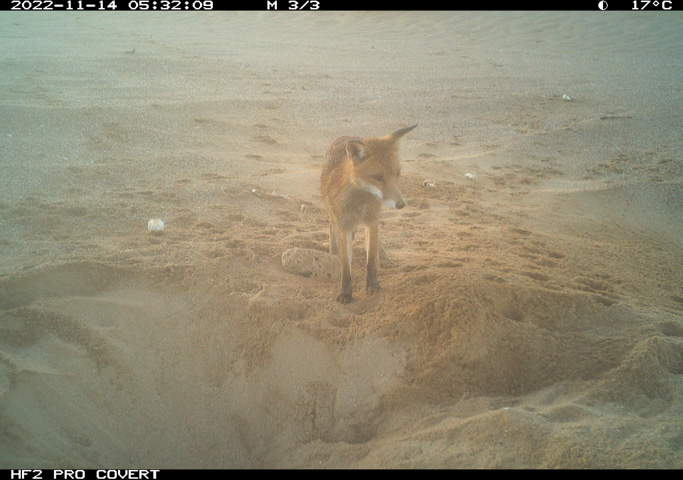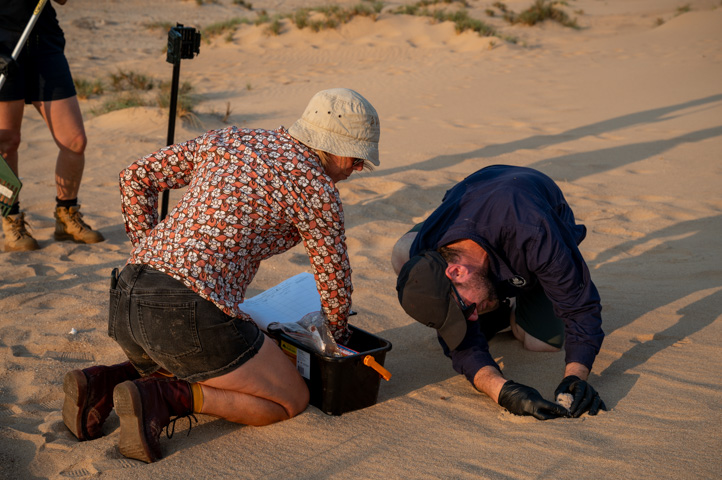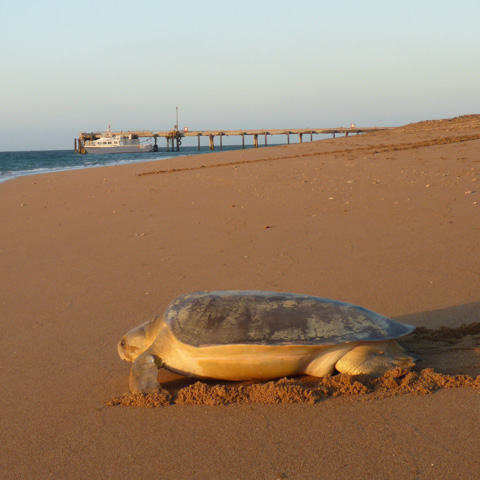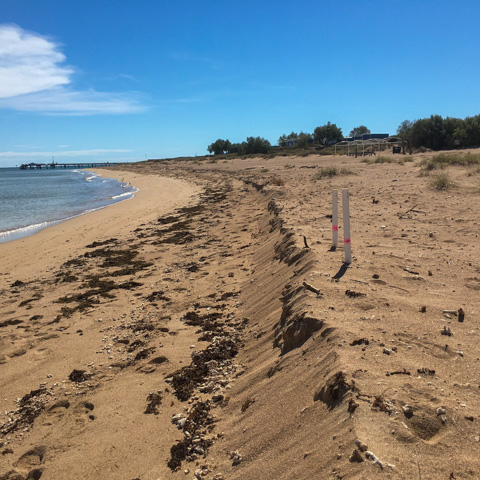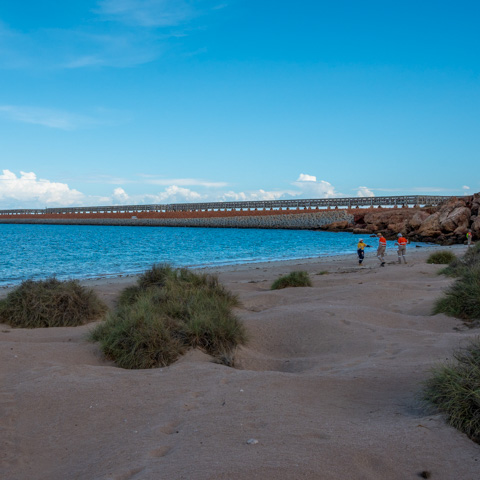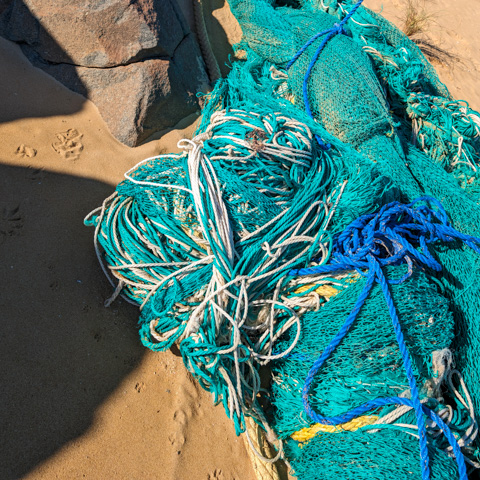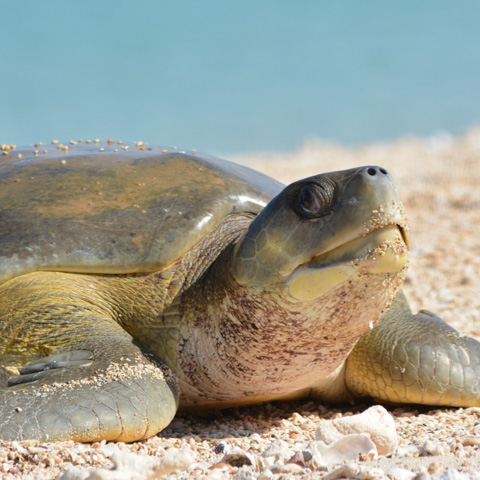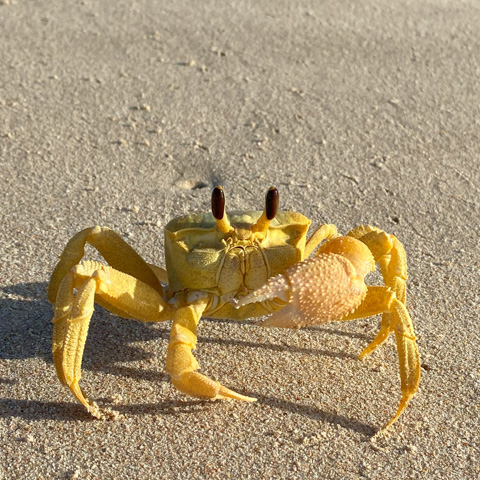Understanding the risks from predators
Flatback turtles are targeted by predators at all stages of their life; eggs, hatchlings, juveniles and adults. While predation is a natural part of life, a thorough understanding of which predators target flatbacks, the defence strategies they use, and what anthropogenic actions may increase the impact of predators will improve conservation managers’ risk assessment abilities and the development of effective management.
What we know so far
Identifying risk factors for increased predation, understanding the behaviours of predators, and understanding how flatback turtles protect themselves against predators has been the focus of research in the NWSFTCP.
Research has identified that nearshore structures such as jetties have the potential to concentrate predators and should be considered in environmental assessments of these types of structures. Observation of the predation behaviours of saltwater crocodiles and foxes found that saltwater crocodiles target flatback turtles at all stages of their life using a range of hunting methods, and that foxes are most likely to predate nests once hatching has already occurred. An adult flatback turtle has been observed defending itself against a tiger shark, and morphological defences against predators are shown to be more developed in flatback turtle hatchlings than in the closely related green turtle.
Detecting fox predation at Mundabullangana Station
Research highlights
Footage obtained from a camera mounted on a flatback turtle’s shell in Yawuru Nagulagun Roebuck Bay Marine Park has shown an interaction between a tiger shark and a flatback turtle. The adult turtle repeatedly lunged towards the shark, attempting to bite it four times before escaping. This was the first time this behaviour had been observed.
A redefinition of marine turtle anti-predator behaviour can’t be made after a single observed interaction. However, it does raise a new hypothesis that marine turtles may have evolved enhanced anti-predator behavioral adaptations because of the morphological vulnerability caused by the inability to retract their heads and limbs into their shell.
This research was led by Murdoch University’s Harry Butler Institute PEAC Lab (see more of their work here), in collaboration with DBCA/NWSFTCP, DBCA/Yawuru Marine Park Rangers and Nyamba Buru Yawuru Country Managers, and Staffordshire University. The research was supported by the Ecological Society of Australia's Holsworth Wildlife Research Endowment.
Using a combination of direct and camera trap observation at Mundabullangana Station, one of the largest rookeries in the North West Shelf, researchers worked to understand the effects, cues, and timing of predation on flatback turtle nests and compared the effectiveness of the two observation methods.
The results showed that over a quarter of the nests at this rookery were predated either by birds, reptiles or foxes, with foxes being the primary identified predator. More than half of the events occurred late in the development process between turtles hatching and emerging from the nest, showing that losses calculated by counts of eggshell left in the nest are underestimates. Camera traps were able to detect twice as many predation events compared to direct observations of tracks, and provided the ability to identify predators, observe their behaviour, and detect when nests were predated more than once (with one nest being predated five times).
This research was led by DBCA/NWSFTCP, in collaboration with Murdoch University’s Harry Butler Institute, Western Australia's Department of Primary Industries and Regional Development and Curtin University.
Flatbacks are the only marine turtle species that don’t have an oceanic phase in their development – instead of going into the deeper ocean, they stay in the shallower, predator-rich coastal shelf. To assess if flatback turtles develop morphological defences to mitigate the risk of predators, researchers compared the development of flatback hatchlings against that of the closely related green turtle (Chelonia mydas).
Flatback hatchlings from Queensland and Western Australia were captured and raised in controlled conditions with a similar experimental design to that used in previous green turtle research conducted in Florida. Growth characteristics, scute serrations, behaviour, and carapace coloration were all assessed, with results supporting the hypothesis that morphological defenses are better developed in juvenile flatbacks than in juvenile green turtles.
This research was led by Florida Atlantic University, in collaboration with DBCA/NWSFTCP and James Cook University.
The predation of marine turtles by saltwater crocodiles is an important mortality component for nesting turtles in tropical areas. To understand the predation tactics used by saltwater crocodiles, nightly beach patrols and early morning turtle track surveys were conducted at two beaches in Northern Australia.
The surveys show that saltwater crocodiles target marine turtles using various methods. They consume eggs by excavating nests on the beach, hatchlings by direct hunting in sand dunes, and adults either by using a ‘sit and wait’ tactic and attacking a turtle at the water’s edge after nesting, or an ‘active hunting’ strategy where they followed turtle tracks into the dunes to attack adult turtles at nest sites.
This research was led by DBCA/NWSFTCP, in collaboration with Charles Darwin University and the Northern Territory Department of Natural Resources, Environment, and the Arts.
Publications
2023
2021
2016
2011
Researchers

Dr Scott Whiting
Principal Research Scientist
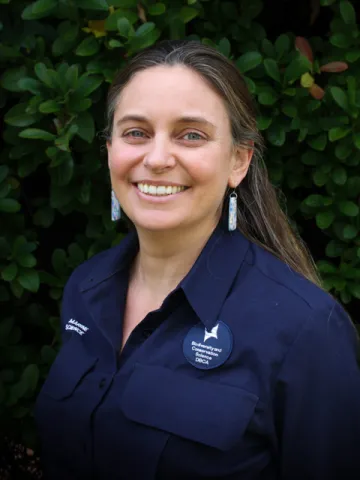
Dr Sabrina Fossette
Senior Research Scientist

Dr Tony Tucker
Senior Research Scientist





